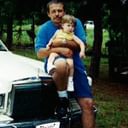Another death row inmate is challenging his conviction with new evidence that the charge of arson in his case was based on faulty science. Daniel Dougherty, a Pennsylvania man who faces execution for setting a fire that killed his children in their home in 1985, has always maintained his innocence. In 2006, Dougherty filed an appeal with the Pennsylvania Supreme Court containing the reports of two arson investigators who re-examined his case and found no conclusive indicators of arson. In 2004, Texas executed Cameron Todd Willingham, who was also convicted of starting a fire that killed his children in their home. Last month, the Texas Forensic Science Committee admitted in a preliminary report that flawed arson science was used in the Willingham case. Until the early 1990s, guidelines for determining arson were largely based on imprecise criteria used by fire investigators with little formal training. In 1992, the National Fire Protection Association released its first arson guidebook, based on years of simulations and studies. Both Willingham and Dougherty were convicted based on reports prepared prior to the release of this new guidebook. Dougherty was not convicted until 15 years after the fire that killed his children. His second wife, with whom he was having a custody dispute, claimed that he admitted to setting the blaze. His first wife, and the mother of the deceased children, does not believe that Dougherty committed this crime.
(S. Chen, “Junk science? Another inmate on death row fights to disprove arson,” CNN, August 12, 2010). See Innocence and Arbitrariness.


